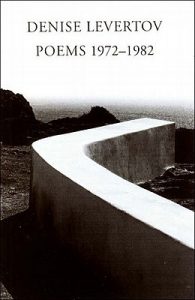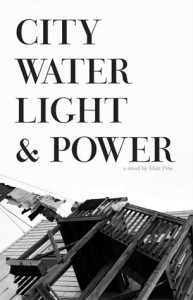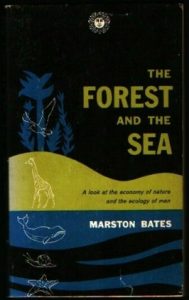Alternate Realities
The narrative of this book actually takes place in two realities that alternate throughout the book. One is the land of teenaged Ben Moor living in Reston, VA and dealing with his dad’s death. He’s a pretty typical teenager–trying to mask the hurt while also trying to build a life of his own. Nevertheless, the world is carefully created and well imagined which makes it all very interesting, immediate, and personal. While Ben, Bobby Jihad (Ben’s brother) and their friends are living it up on spiked ginger ales and track meets, I worried about Ben’s sadness. I worried more about Bobby Jihad’s bravado. And sometimes I wanted to see Kitty kick Ben in the nuts.
The secondary world, that of an assassin in New York who has just been ordered to knock off one of his own crew. Although the action here takes place in 2011 New York, it’s so dark that I frequently wondered if it was an alternate history. I actually spent a lot of time wondering about its relationship to the first story. But even as the back of my brain puzzled over why both main characters drank ginger ale and had strangely similar ill-fitting suits, I was wrapped up in the cinematic pace of the action.
The Voice of a Generation
“I look down on you from the ridge, on you and what remains of you, and in your blood I see a map of your own making (and mine). I recognize it; I’m quite sure I at least half understand the language.” – David Bendernagel, The End of the City
Part what makes these two worlds so effective is the dense and evocative language Bendernagel uses. Although not as turgid as the dialogue in Rian Johnson’s Brick, The End of the City has a lingo all its own. The language–a kind of disaffected shorthand that feels very male and very much set in its generation–sets the mood immediately. It also forces the reader to slow down and inhabit what’s happening or be lost forever. For example, Ben’s reference to the events of September 11, 2001, “Jet fuel goes up. Two towers collapse.” is cryptic, but there’s a lot of story (and emotion) held just below that surface.
Cultural Referents
One distinctive aspect of that voice is the cultural referents Bendernagel uses. I beamed when reading how one character “pulled a McConaughey” and also wondered how many readers would miss the reference to Dazed and Confused. This decision between being specific (which sometimes means being oblique) is something I’ve struggled with in my own writing. Reading The End of the City, I realized how close the connection between writer and reader can feel when you’re on the inside of the jokes.
The other side of cultural referents is that they can easily be misunderstood. I struggled with this as I tried to reconcile the two story lines in this book. Bendernagel kept dropping references to Back to the Future and 12 Monkeys: two referents that signaled to me that time travel was imminent. When I finally understood the actual relationship between the narratives, I felt a little led astray.
Writing about Tragedy
In the end, it doesn’t matter if Ben’s dad’s death is suicide, a heart attack, or an accident. It doesn’t matter if it’s related to 9/11 or not. What matters is the personal tragedy to Ben of losing his dad at twelve. And that’s the perfect approach and what I love about novels–they take the whole big world and break it down into individual characters and experiences we can get inside and empathize with. I mostly avoid books about 9/11 (and, actually, the phrase “9/11”) either because I’m not sure I’m ready to deal with it or because I’m terrified of the sanctified air we apply to that day. I really appreciated how, by dealing not with the tidy euphemisms we’ve developed to talk about that day but instead with the loss experienced by one boy, Bendernagel let me feel the pure weight of the emotion. He let me get inside the feeling.
While the voice in The End of the City was so strongly male and so American that for a couple of weeks after finishing this book I found myself drawn to books about foreign lands written by women just to balance myself out, it was a treat to read something so different than what I’d been reading lately. When Bendernagel offered me this review copy, he said people had compared the book to the work of Jonathan Lethem. There’s some of that, but I’d say it’s even more grounded in the gritty and weird movies of the late 1990s like 12 Monkeys, Heat, and even Se7en. That may sound like a stretch for all the emotional impact I promised in the previous paragraph, but for a someone who fell in love with her husband while watching and discussing those very films so many years ago, it’s all a pretty good fit.
 There are many ways I will fall in love with a book.
There are many ways I will fall in love with a book. 
 I don’t usually read nonfiction. In fact, it’s the one genre I get snobby about (especially those self-help-type business books that regurgitate info rather than creating anything). I really do have strong feelings about those books. But the rest of nonfiction, for me, simply falls victim to my desire to lose myself in the dream worlds of poetry and fiction. So I have no idea what inspired me to pluck The Forest and the Sea by Marston Bates, but I’m glad I did because it opened me up to a whole world of ideas and helped me see the world from a variety of fresh perspectives.
I don’t usually read nonfiction. In fact, it’s the one genre I get snobby about (especially those self-help-type business books that regurgitate info rather than creating anything). I really do have strong feelings about those books. But the rest of nonfiction, for me, simply falls victim to my desire to lose myself in the dream worlds of poetry and fiction. So I have no idea what inspired me to pluck The Forest and the Sea by Marston Bates, but I’m glad I did because it opened me up to a whole world of ideas and helped me see the world from a variety of fresh perspectives.